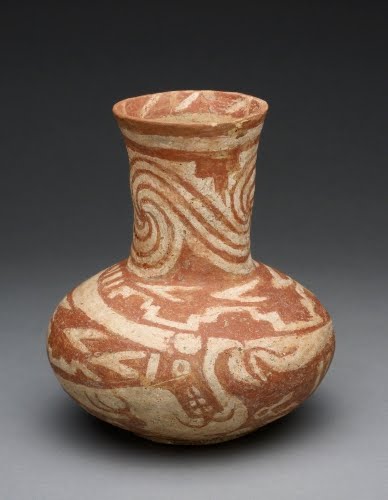What's in a Snake 1: Mississippian Culture
I really don’t have anything against snakes. Snakes may have something against me, after I once, as a teenager, accidentally planted one of my size-12 gunboats on a garter snake and it bit me. My fault!
I’m sure it isn’t a well-known fact, but, February 1st was National Serpent Day. I couldn’t find any info about the history of the “national day,” but it sure is interesting when one ponders on the fact that so many people have phobia about snakes, and yet, since ancient time the snake was venerated as a semi-deity.
In ancient Egypt, the cobra was a sign of protection for the pharaoh. In India, the cobra is a symbol of eternity because of the regular shedding of its skin. The serpent king Mucalinda sheltered Buddha after he had achieved Nirvana and was threatened by a storm while meditating. And we all know about Quetzalcoatl, the feathered serpent in ancient Mexican religious beliefs. I could go on and on with examples, as you know. This week I’ll present you with a series of further examples of the prevalence of the snake as subject matter in world art.
 |
| Mississippian Culture, probably Arkansas, Bottle with underwater serpent decoration, ca. 1300–1500 CE. Painted earthenware, 9 1/2" x 8" (24.1 x 20.3 cm). © 2017 Art Institute of Chicago. (AIC-379) |
Although the snake certainly represents sinister forces in many cultures worldwide, it is equally revered as a life-bringing provider of the bounty of the earth. The Mississippian Culture, one of the last indigenous American cultures that flourished before the conquest, considered the snake, or underwater serpent, to be a good symbol. The snake was often depicted, as on this vessel, with human teeth and the tail sprouting gourds or squash. The Mississippian culture considered it a fertility-spiritual being that oversaw thunder, water, lightning, and plants and animals.
The Mississippian cultures, which included the Chickasaw, Cherokee, Caddoan, Chicamauga, Chisea, Plaquemine, Shawnee and numerous associated bands, flourished from around 700 CE until the late 1500s. Their territory covered the greater part of the central US east of the Mississippi River, including Tennessee, Mississippi, Ohio, Illinois, Kentucky, Arkansas, Georgia, Missouri, and Alabama. Their influence reached west into the Great Plains and southeast. They were a mound-building culture that built large communities, which included platform, pyramidal ceremonial sites and ball courts.
Ceramics are among the most refined of the objects recovered from Mississippian culture. Although there are no Mesoamerican artifacts that have been found in Mississippian archaeological sites, their ceramic arts betray a definite Mexican influence. They had an extensive trade network via the Mississippi and Tennessee Rivers, extending all the way to the Gulf of Mexico.
Check back tomorrow for an example of snakes in Hindu art.
Other posts in this series:


Comments